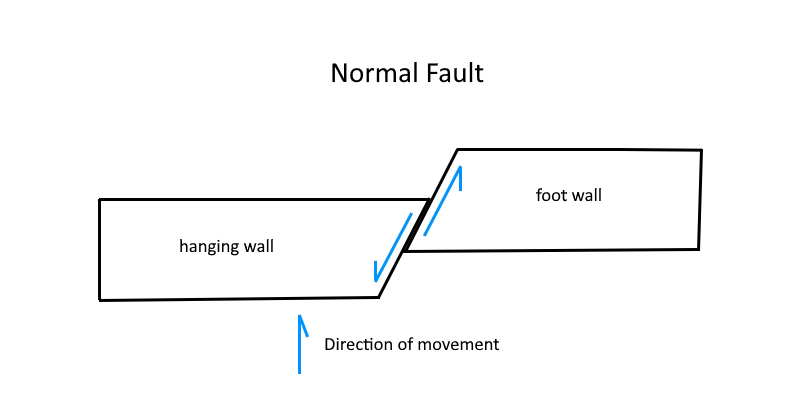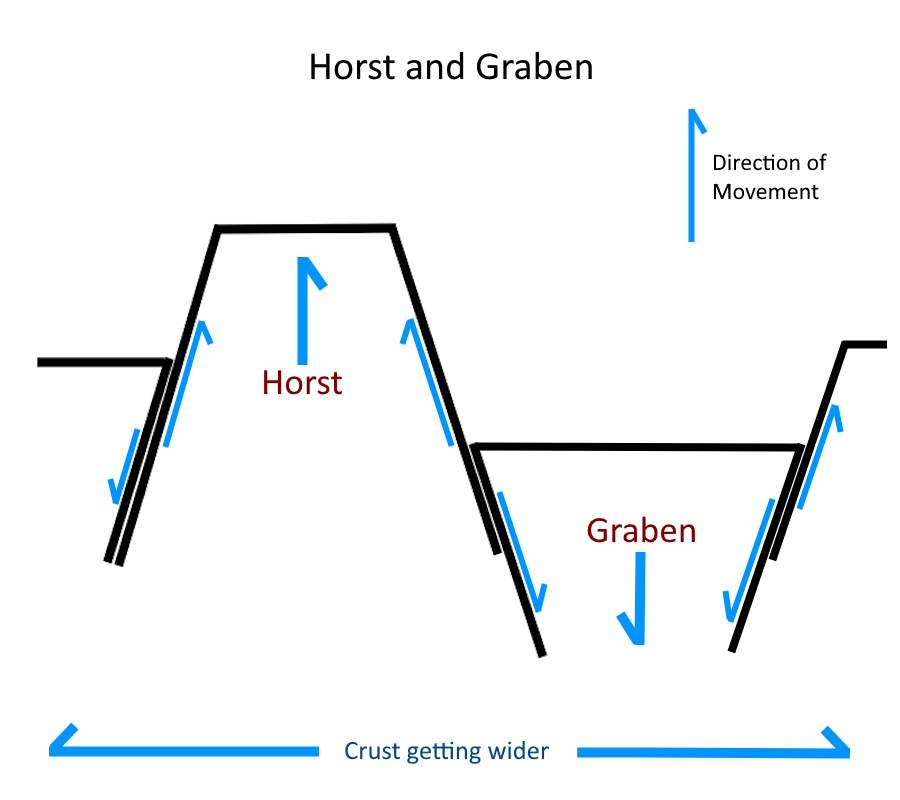The German Fault Features: Horsts, Grabens, and Half Grabens
One aspect of extensional faulting is the shape and behavior of these blocks as the crust gets wider, and these blocks fall into three main categories, horsts, grabens, and half grabens. These features are all bound by normal faults, where the hanging wall is dropping in relation to the foot wall (Fig. 1).

A simple way to remember the difference between a horst and graben is that a horst goes up in relation to the surrounding crust, a graben goes down. Another way to look at it is, a horst is a block with the foot wall of a normal fault on both sides, and a graben is a block with the hanging wall of a normal fault on both sides (Fig. 2).

When you have a block that is a hanging wall on one side and a foot wall on the other, it is known as a half graben (Fig. 3). The normal faults that bound a half graben eventual curve as listric faults, joining a detachment fault at depth (for a review of that system click here). These half grabens are responsible for a good portion of the corrugated terrain of Basin and Range.

Where to see horsts, grabens, and half grabens
- Basin Range (parts of Nevada, Oregon, Utah, Arizona, Wyoming, California, and Idaho)
- San Luis Valley, Upper Arkansas River Valley, Rio Grande Rift, Colorado and New Mexico
References
- Roadside Geology of Nevada, F. DeCourten and N. Biggar
- Roadside Geology of Utah, L. Chronic and H. Chronic
